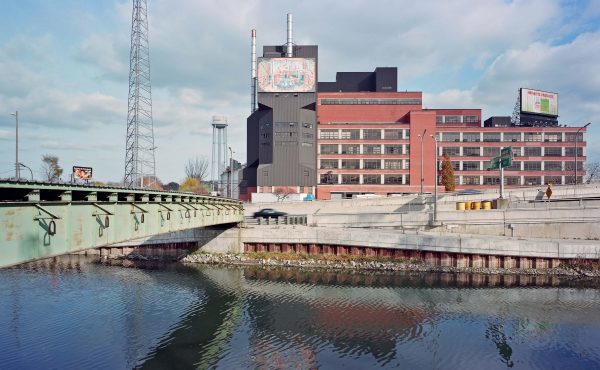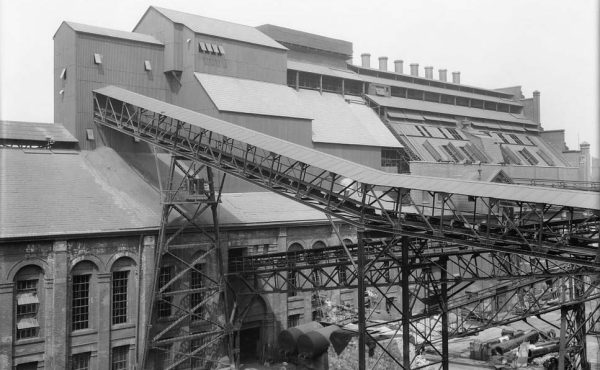
For those of you with a city-focused book fetish, you should be looking forward to Spacing’s upcoming issue where we review a handful of excellent books: Toronto — A City Becoming, Concrete Toronto, Greentopia, Transit Maps of the World, Black Geographies and the Politics of Place, Not The Trailer, and Guerrilla Gardening: A Manualfesto.
But the editors of Spacing hope to highlight more books on this blog by starting a new monthly feature — with a little help from you. A Spacing Toronto contributor will briefly write about an city/urban book they’ve been reading — a mini-review, so to speak — and then ask our readers to tell us which books have been turning their crank. We’re aware that many overlooked gems are lying on bedside tables waiting for the word-of-mouth campaign to begin.
 I’m kicking things off today with The Public Metropolis by Frances Frisken. As Spacing’s publisher, I should have a good grasp on the history of Toronto’s growth and development, not to mention the government decisions that have shaped our city. But to be honest, there are very few books that can help me learn about the history of local governance. So when I received The Public Metropolis in the mail back in January, I was extremely excited to jump right into it.
I’m kicking things off today with The Public Metropolis by Frances Frisken. As Spacing’s publisher, I should have a good grasp on the history of Toronto’s growth and development, not to mention the government decisions that have shaped our city. But to be honest, there are very few books that can help me learn about the history of local governance. So when I received The Public Metropolis in the mail back in January, I was extremely excited to jump right into it.
A description of the book from the Neptis Foundation:
The Public Metropolis traces the evolution of Ontario government responses to rapid population growth and outward expansion in the Toronto city region over an eighty-year period [1924-2003]. Frisken rigorously describes the many institutions and policies that were put in place at different times to provide services of region-wide importance and skillfully assesses the extent to which those institutions and policies managed to achieve objectives commonly identified with effective regional governance.
Although the province acted sporadically and often reluctantly in the face of regional population growth and expansion, Frisken argues that its various interventions nonetheless contributed to the region’s most noteworthy achievement: a core city that continued to thrive while many other North American cities were experiencing population, economic, and social decline.
I found it amusing to read about familiar issues and topics, but from the perspective of the 1940s, ’50s and, ’60s: strained relationships between municipal and provincial bureaucracies, the clash of personalities of our mayors and premiers, the divisive role the OMB has played in numerous land-use disputes, and the rural-urban divide that seems to echo the current urban-suburban divide. Its an excellent read for students in the city-building field or for those curious about how Toronto, as a city and government, finds itself in its current position. It also helps that the book is bereft of jargon and government-speak, and written in a style that most anyone could feel comfortable with.
So, what are you reading these days? And should the rest of us check it out?




10 comments
Great topic! I have a shelf full of books to recommend, but they’re at home and I’m at work right now. I can’t wait to get involved in talking about them and seeing what other people recommend.
“Frisken argues that its various interventions nonetheless contributed to the region’s most noteworthy achievement: a core city that continued to thrive while many other North American cities were experiencing population, economic, and social decline.”
If the mere retention of jobs during a prolonged period of growth in the outlying areas is considered thriving, I would hate to see what the definition of decay is.
Remove the institutions that attached those companies to the ‘core’ and it would have rotted as much as the outer 416 area. Without U of T, Queens Park and various ministries and the TSX, the Detriotifcation of Toronto would have been complete. Fortune, not policy, is responsible for any life that remains in the core.
Glen:
Did you spend 8 years researching this topic and have it take 4 mores years of academic vetting to come to your conclusion? Just curious since thats what Frisken did. I guess your two throw-away sentences are much more accurate and factual than her analysis of 80 years of growth.
As for books I’m reading on relevant topics:
• Graffiti of Los Angeles
• Bicycles Locked to Polls (McSweeny)
• Mean City (Dominion Modern)
Mean City is a great look at Toronto Modernist architecture history. Just a great book for Toronto-philes.
Ali:
Why not rebut Glen’s comments rather than criticizing him for daring to post a comment on the book without having the requisite academic qualifications?
ali,
I didn’t have to spend eight years. The reality is starring us in the face. You should also note that the city’s own reports confirm the exact same findings.
I am sorry for you if you think that my lack of formal education precludes me from having an opinion on the matter. Thankfully I have never let it stop me.
Put down your books and pick up the gauntlet I have thrown down. Provide evidence that my remarks are not factual.
I don’t really have to rebut it — Glen has to defend his point since the book IS the rebuttal. Read the book before stating whether its thesis is wrong. Not some sort of glib, “I know more than this 12 year researched book.” C’mon.
And unless Glen is 90-plus years old, and hasn’t done years of research on this topic, I don’t know how he can easily say the thesis is wrong. Its not the lack of formal education, its the lack of insight into the topic compared to the author.
The book is not a rebuttal. It is what made the original point to which I challenged. The author could spend an entire lifetime researching but if they maintain the same conclusion they will still be wrong.
OK. Try this on for size. I am 130 years old and have researched this topic for 40 years and have written two books on the subject. Following your logic you must automatically defer to my opinion over Frisken’s.
Below are some points contained in the City’s own report (http://www.toronto.ca/legdocs/2005/agendas/council/cc051026/pofedp2rpt/cl001.pdf)
“In 1989, total employment in the City of Toronto peaked at almost 1.5 million workers.
Since that time, employment in the city has at best languished. In fact, it is estimated that
100,000 fewer people work today in the City of Toronto than fifteen years ago. In
contrast, employment in the rapidly growing suburbs around Toronto has increased
significantly over this period. In the last 15 years, 800,000 new jobs have been created in
the rest of the Toronto CMA (905 area).”
“In 2002, the 905 area became a net importer of labour from Toronto and the rest of
Ontario. In 2003, the 905 area finally surpassed the City of Toronto in terms of total
employment. Already in 2001, more City residents commuted to jobs in Vaughan, than
Vaughan residents worked in the City.”
You should also have a look at pages 9 – 14 here :
http://www.toronto.ca/finance/pdf/taxpolicy_pres_oct2005.pdf
PS Logic and reality are not a function of time.
You’ve made up your mind on this without reading the book.
So I will say this about your blog: Your points are ridiculous and useless to anhyone who has read about Toronto issues over the years. I say this without reading your blog but only reading the summary description of it.
That’s how silly your comments are: taking someone tiny bit of info from a report and making wide sweeping allegations that it is wrong. Once you read the book, and if you still idsagree, I’ll gladly accept your point. But until you have an informed opinion about the book, then shut up.
It is not a ‘tiny bit of info from a report and making wide sweeping allegations ‘. It is, according to the summary provided, the whole point of the book.
What I should have been more clear on is that my points are only relevant to the present and near past. During the period of time that the book covers, I willingly accept that it may have many valid observations. Though the end of the period covered (2003) Toronto was well into the the current malaise that it still finds itself in.